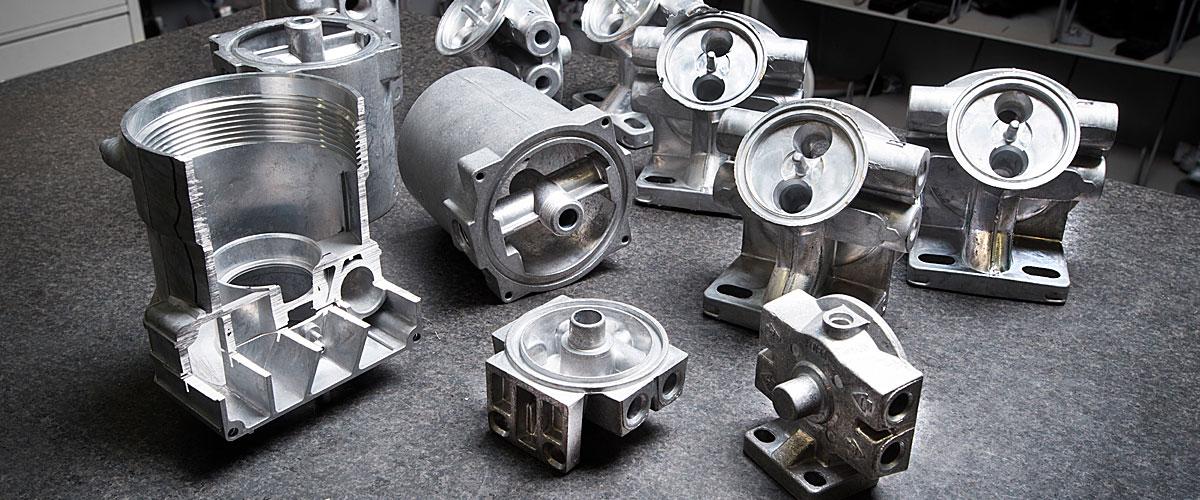Aluminum casting is a process that has been revolutionizing industries for over a century. From transportation to infrastructure to consumer goods, cast aluminum plays a vital role in modern life. This versatile material can be molded into complex shapes that would be nearly impossible with other manufacturing methods. Let's take a closer look at aluminum casting and how it is changing the world.
A Brief History of Aluminum Casting
Aluminum casting first emerged in the late 1800s as a commercial process. Until that point, aluminum was extremely rare and expensive due to the difficulty of extracting it from bauxite ore. In 1886, Charles Martin Hall and Paul Héroult independently developed the Hall–Héroult process, which made aluminum much more affordable to produce. This breakthrough allowed aluminum casting to take off on an industrial scale.
Some of the earliest applications of cast aluminum included architectural components, cooking utensils, and bicycles. During both World Wars, aluminum casting played a key role supporting military needs for aircraft, vehicles, and more. In the postwar era, casting aluminum became even more widespread as automakers incorporated it into everything from engine blocks to chassis components. Today, cast aluminum remains vital across numerous sectors.
Cast Aluminum in Transportation
The transportation industry relies heavily on cast aluminum for its light weight, corrosion resistance, and design flexibility. Around 30% of the material composition in modern vehicles is aluminum, much of which is cast. Engine blocks, cylinder heads, Transmissions cases and differentials housings are commonly made through casting due to its ability to create complex coolant channels and other internal features.
In the aircraft industry, cast aluminum allows the construction of strong yet lightweight wing, fuselage and landing gear components. This is critical for fuel efficiency and performance. Marine applications also use aluminum casting for propellers, engine blocks, hulls and other parts. The mass transportation sector incorporates cast aluminum tracks, carriages, and infrastructure to reduce weight over steel. With greater recyclability than other metals, aluminum casting solutions help boost sustainability across transit modes.
Cast Aluminum Benefits Infrastructure
Civil construction utilizes cast aluminum street lights, manhole covers, storm drains grates and other municipal fixtures that must withstand heavy foot and vehicle traffic for decades. Buildings employ cast aluminum window frames, doors, handrails, and panels for their attractive aesthetics and corrosion resistance even in harsh environments. Aluminum castings are also increasingly found in bridges as they can be erected more swiftly than steel while offering 40% weight savings over concrete.
Hydropower facilities depend on cast aluminum for generator housings, turbines, valves and pipes able to operate under extreme pressures. Similarly, foundries produce cast aluminum heat exchangers, chillers and ductwork for sustainable power plants and green building HVAC systems. As populations grow and infrastructure modernizes, cast aluminum plays an essential role in strengthening communities for the future through products that last with minimum maintenance needs.
Consumer Applications
Nearly every home has cast aluminum cookware, small appliances, lamps or other decor taking advantage of aluminum's conductive and non-reactive properties. Portable devices like mobile phones, laptops and tablets utilize die cast aluminum frames, casings and heat sinks for thermal dissipation without added weight. Decorative cast aluminum planters, furniture and outdoor items decorate public spaces and backyards while resisting weathering.
Sporting goods manufacturing remains a prime application domain for cast aluminum. Bicycles, kayaks, fishing reels and baseball bats exploit the metal's toughness and weight benefits. Foundries work with designers to create sleek yet durable cast aluminum alternatives to plastic. Artisans also cast aluminum into fine art sculptures, fountains and lighting fixtures admired for their detailed craftsmanship and longevity.
The Future of Aluminum Casting
As technologies evolve and design demands grow more complex, aluminum casting innovates to keep pace. 3D printing now enhances patternmaking for intricate components. Computer modeling streamlines prototyping and optimization. Closing the loop, recyclers recover over 75% of scrap cast aluminum back into new products thanks to its infinite recyclability. Experts predict the market share of cast aluminum will continue expanding across industries committed to performance, value and sustainability for generations to come. With constant refinement, this versatile process ensures cast aluminum retains its prominent role shaping our world.
In aluminum casting has profoundly impacted industries and daily life over the past century by efficiently manufacturing strong yet lightweight products. From automobiles and aircraft to infrastructure and home goods, cast aluminum pervades modern society through applications exploiting its unique properties. With ongoing process improvements and innovative applications on the horizon, aluminum casting solidifies its importance for sustainable progress well into the future. It remains a driving manufacturing technology that will shape communities and economies for decades to come.
Get more insights on this topic: https://www.newsanalyticspro.com/aluminum-casting-the-process-behind-creating-aluminum-parts/
Explore more information on this topic, Please visit: https://coolbio.org/system-on-a-chip-soc-the-future-of-electronics/

